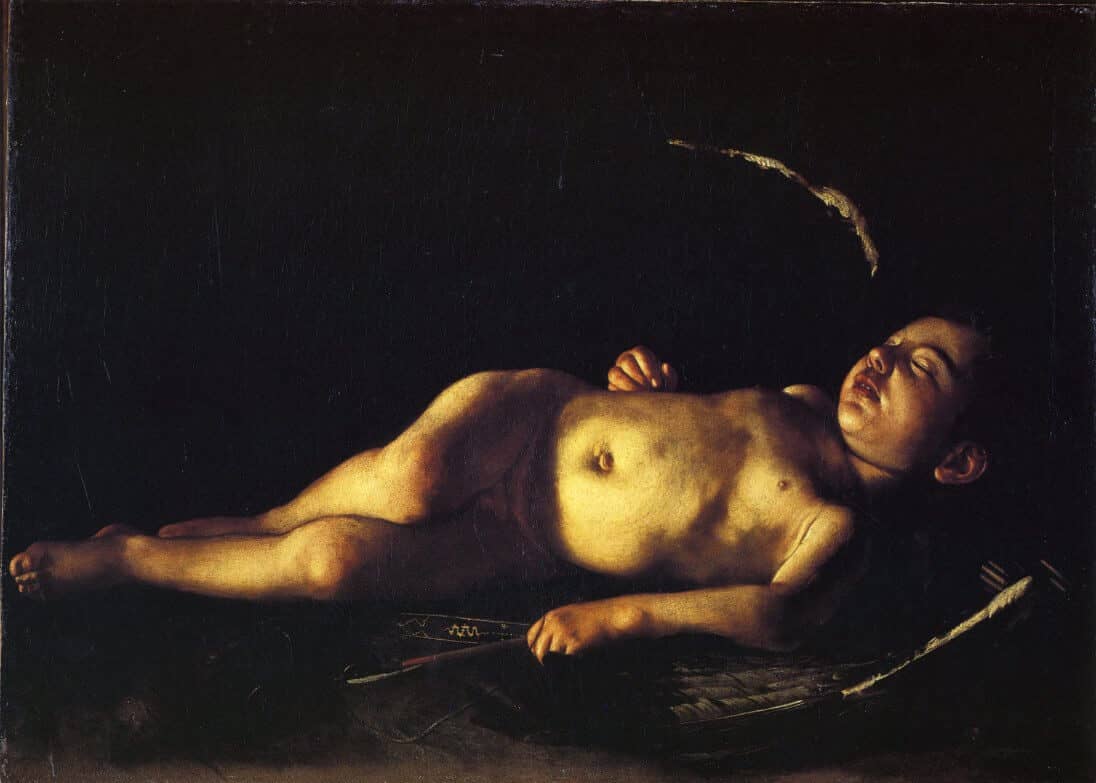Sleeping Cupid, 1608 by Caravaggio

The subject of Sleeping Cupid, his quiver and arrows discarded, his bow-string slackened, usually signified the abandonment of worldly pleasures: Marini has even speculated that the present picture may have been commissioned by a Knight of Justice of the Order of St. John as a reminder of his vow of chastity. We know from an old inscription on the back that it was painted in Malta in 1608 and, indeed, its warm glowing tones seem to bear comparison with other works of this phase in Caravaggio's career.
Nevertheless, the opaque black background which, unusually for Caravaggio, completely conceals a large part of the form of Cupid's right wing, is very different from the lighter, brownish palette used in the contemporary Beheading of St. John the Baptist and may be seen as yet another example of the artist's tendency to explore different effects and styles more or less simultaneously. In the broader context of iconographical trends, it should be oted that the depiction of Cupid as a chubby infant rather than the graceful adolescent popular in the Renaissance, and evident in Victorious Love, was symptomatic of a new Counter-Reformation preference of characterization. But Caravaggio, as usual, infused the new form with his own potent blend of observation and construction: a child sleeping in the shape of a arallelogram.
















